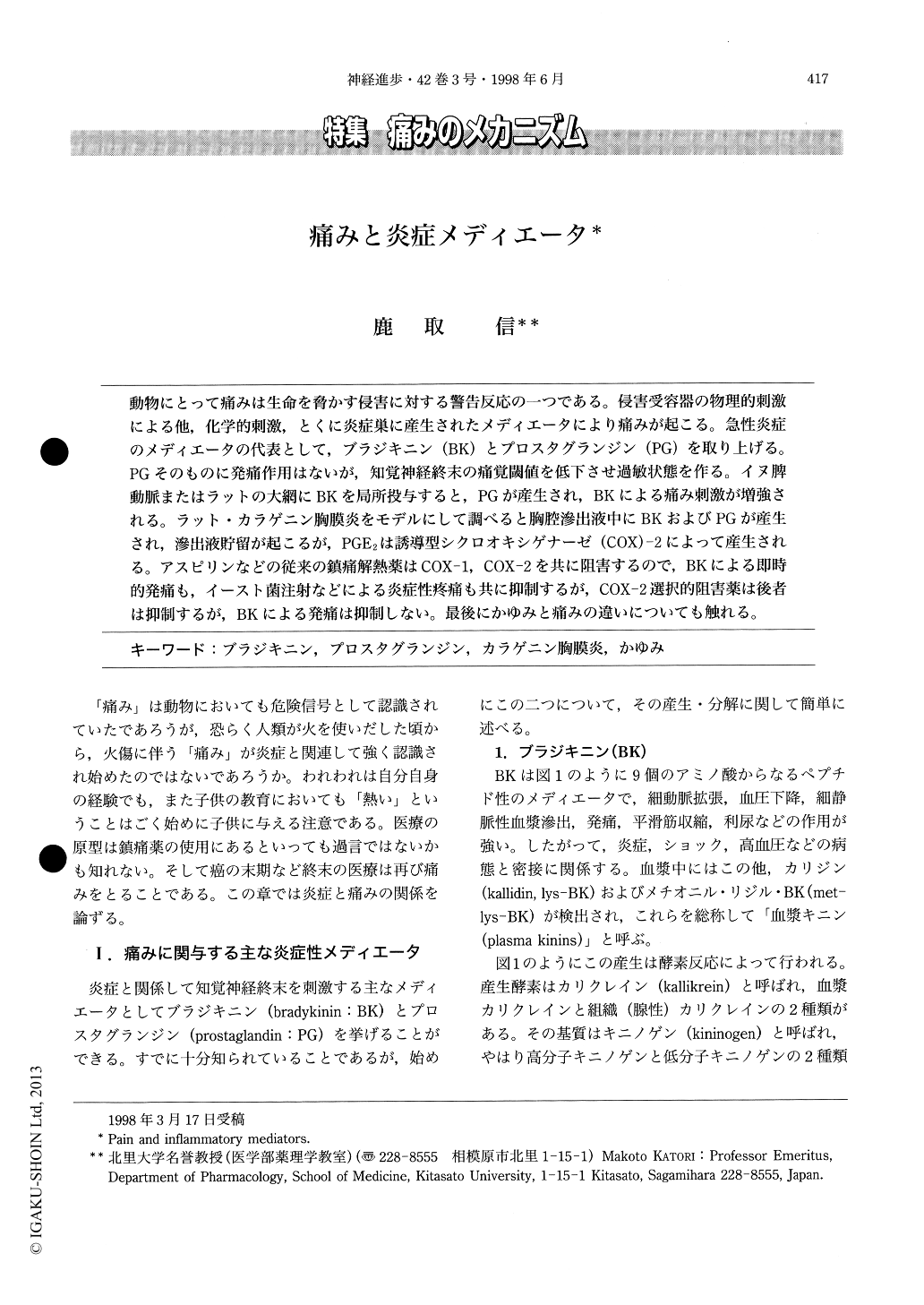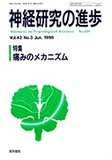Japanese
English
- 有料閲覧
- Abstract 文献概要
- 1ページ目 Look Inside
動物にとって痛みは生命を脅かす侵害に対する警告反応の一つである。侵害受容器の物理的刺激による他,化学的刺激,とくに炎症巣に産生されたメディエータにより痛みが起こる。急性炎症のメディエータの代表として,ブラジキニン(BK)とプロスタグランジン(PG)を取り上げる。PGそのものに発痛作用はないが,知覚神経終末の痛覚閾値を低下させ過敏状態を作る。イヌ脾動脈またはラットの大網にBKを局所投与すると,PGが産生され,BKによる痛み刺激が増強される。ラット・カラゲニン胸膜炎をモデルにして調べると胸腔滲出液中にBKおよびPGが産生され,滲出液貯留が起こるが,PGE2は誘導型シクロオキシゲナーゼ(COX)-2によって産生される。アスピリンなどの従来の鎮痛解熱薬はCOX-1,COX-2を共に阻害するので,BKによる即時的発痛も,イースト菌注射などによる炎症性疼痛も共に抑制するが,COX-2選択的阻害薬は後者は抑制するが,BKによる発痛は抑制しない。最後にかゆみと痛みの違いについても触れる。
Pain is one of the most powerful warning signals for living animals, which are exposed to threatening invasion. Pain sensation is induced by physical stimulation of nociceptors, and also by chemical stimuli, including mediators generated in acute inflammatory sites. Bradykinin (BK) and prostaglandins (PGs) are representatives of the mediators. PGs do not create pain sensation by themselves, but sensitize the nociceptors to reduce the threshold. Stimulation of canine splenic arteries or rat omentum by local application of BK causes generation of PGs, which potentiate pain sensation of BK. In a rat carrageenin-induced pleurisy model, BK and PGs are generated in the pleural cavity to induce plasma exudation. PGE2 is generated by induced cyclooxygenase (COX) -2 in pleural cells. Analgesic and antipyretic drugs as aspirin inhibit pain sensation induced both BK (COX-1) and that by yeast-induced inflammation (COX-2), but COX-2 selective inhibitors inhibit the latter, but not the BK-induced pain sensation. Additionally, difference between itch and pain is discussed.

Copyright © 1998, Igaku-Shoin Ltd. All rights reserved.


